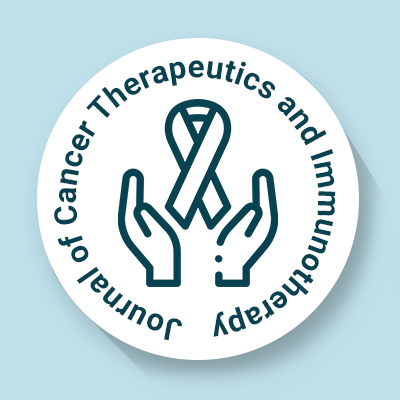
Journal of Cancer Therapeutics and Immunotherapy
OPEN ACCESS

OPEN ACCESS
The tumor microenvironment (TME) is an energetic and complex classification that incases a tumor made up of cancer cells, stromal elements like blood vessels, immune cells, fibroblasts, signaling molecules, and the extracellular matrix. The environment is important in tumor growth, treatment resistance and the spread of cancer.
The bond among the cancer cells and the stromal elements stimulates tumor growth and advance into regular tissues. Tumors are organized equally to organs containing various cell types collaborating into maintain and grow the cancerous conditions. Important basic on the tumor microenvironment contains cancer associated fibroblasts (CAF), endothelial cells, lymphocytes, cancer stem cells, extra cellular matrix proteins, adipocytes. These features together help tumor survival, immune evasions and therapy resistance.
Fibroblast regularly tasked with protective tissue integrity, act in a different way in the TME. Even though regular fibroblasts can prevent tumor growth. CAFs actively encourage the cancer development. Another vital procedure is angiogenesis, in which new blood cells grows from the pre-existing ones, ensuring a fixed amount of nutrients and oxygen to the tumors. Stromal cells also control the infiltration of immune cells and the absorptivity of blood vessels, affecting the immune system’s interface with the tumor.
Metastasis which causes the majority of cancer linked fatalities occurs over various stages: local invasion, intravasation, survival in circulation, extravasation and colonization of distant organs. The TME is important in metastasis by creating a sympathetic environment for the existence of the cancer cells. Current studies highlight how exosomes help set up metastatic locations even before tumor cells reach them.
In blood cancers, the bone marrow microenvironment plays a vital role. Bone marrow niches such as osteoblastic, vascular, reticular niches, offer shelter to leukemia cells, supporting them in avoiding chemotherapy and building resistance. Leukemia cells can exploit these niches to increase their existence, leading to worse outcomes for patients.
Due to its effect on tumor development, focusing on the TME has developed as a promising treatment strategy. Methods like blocking enzymes such as cathepsins and heparinase, interfering with essential signaling pathways like CXCR4-CXCL12 and altering inflammation are being investigated to increase cancer treatment outcomes.